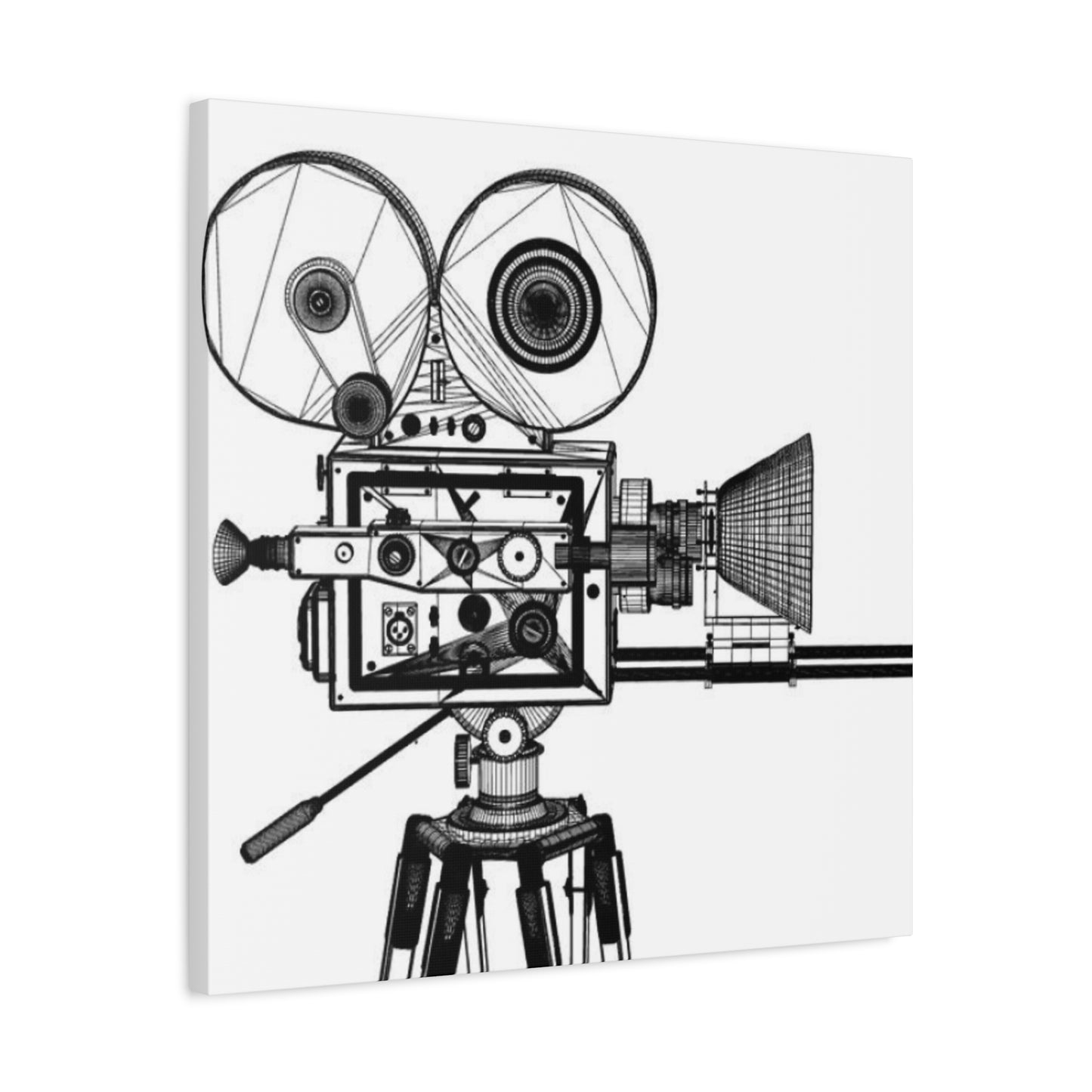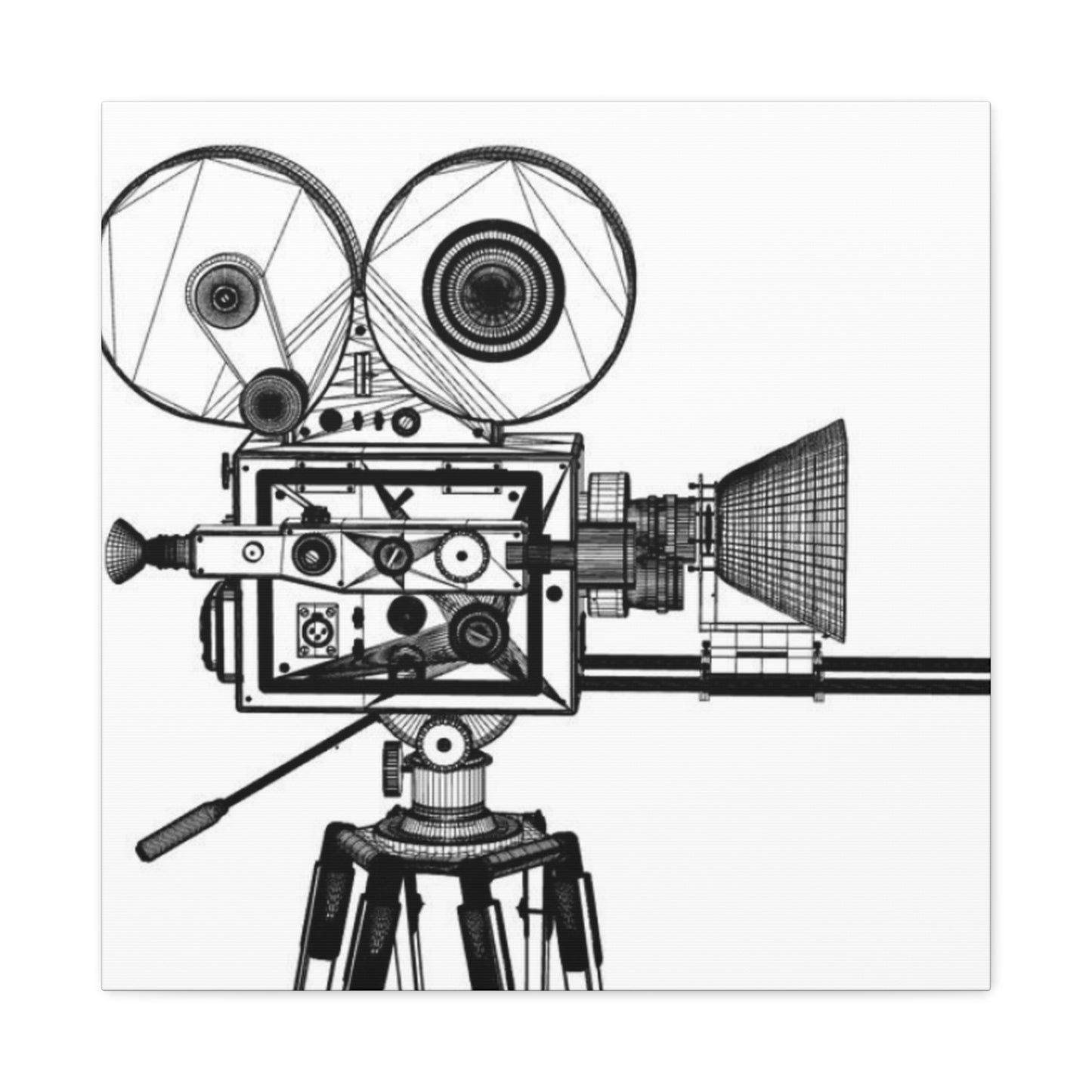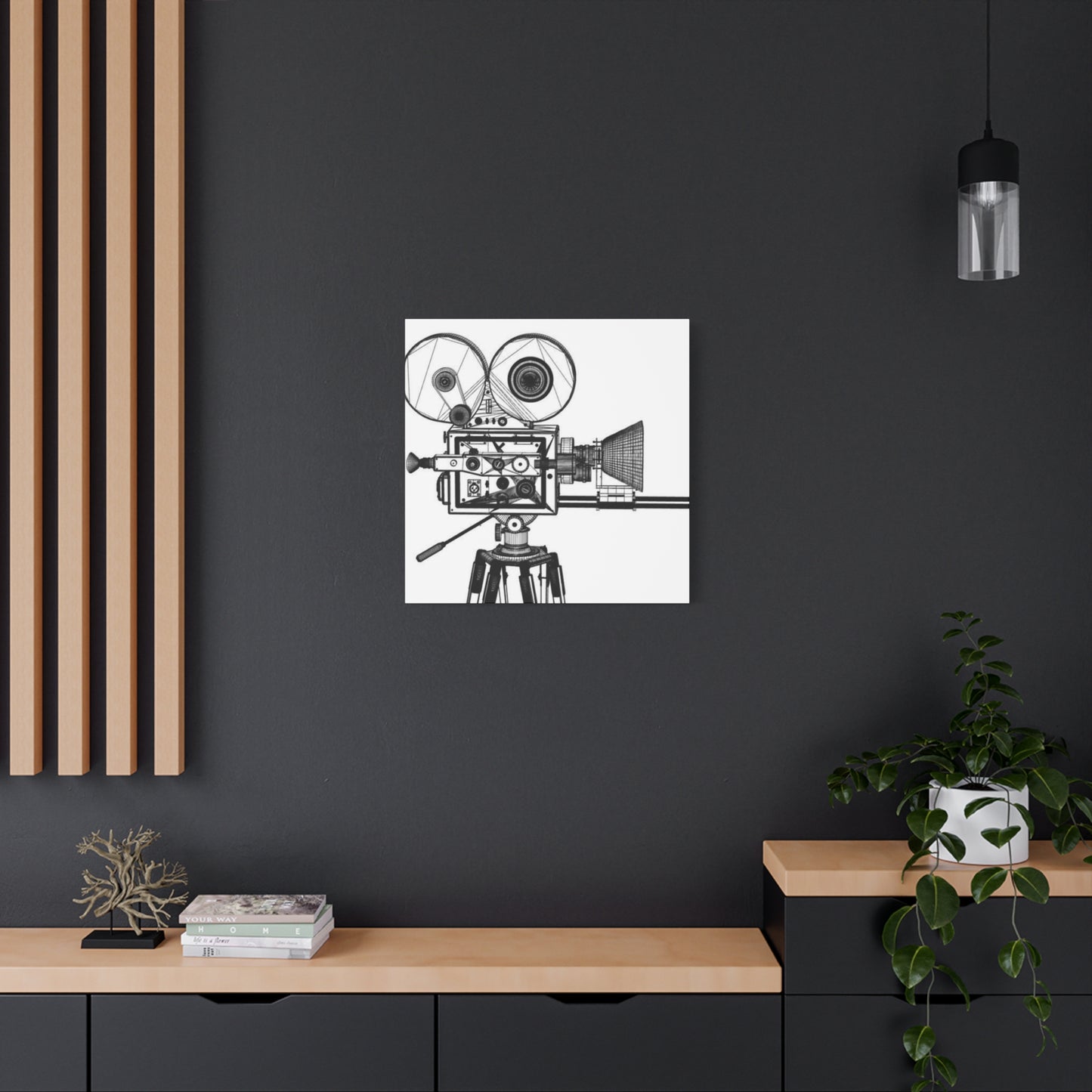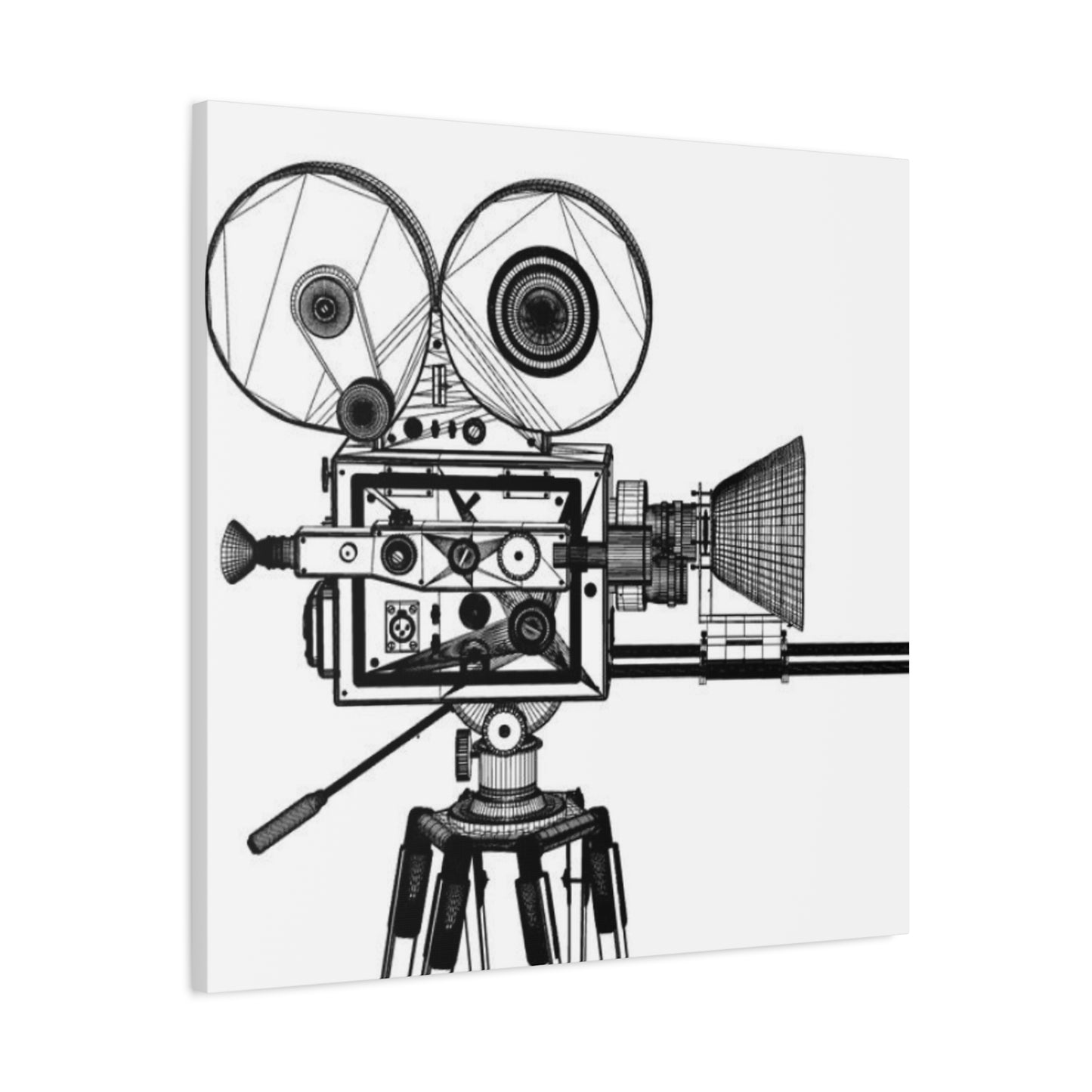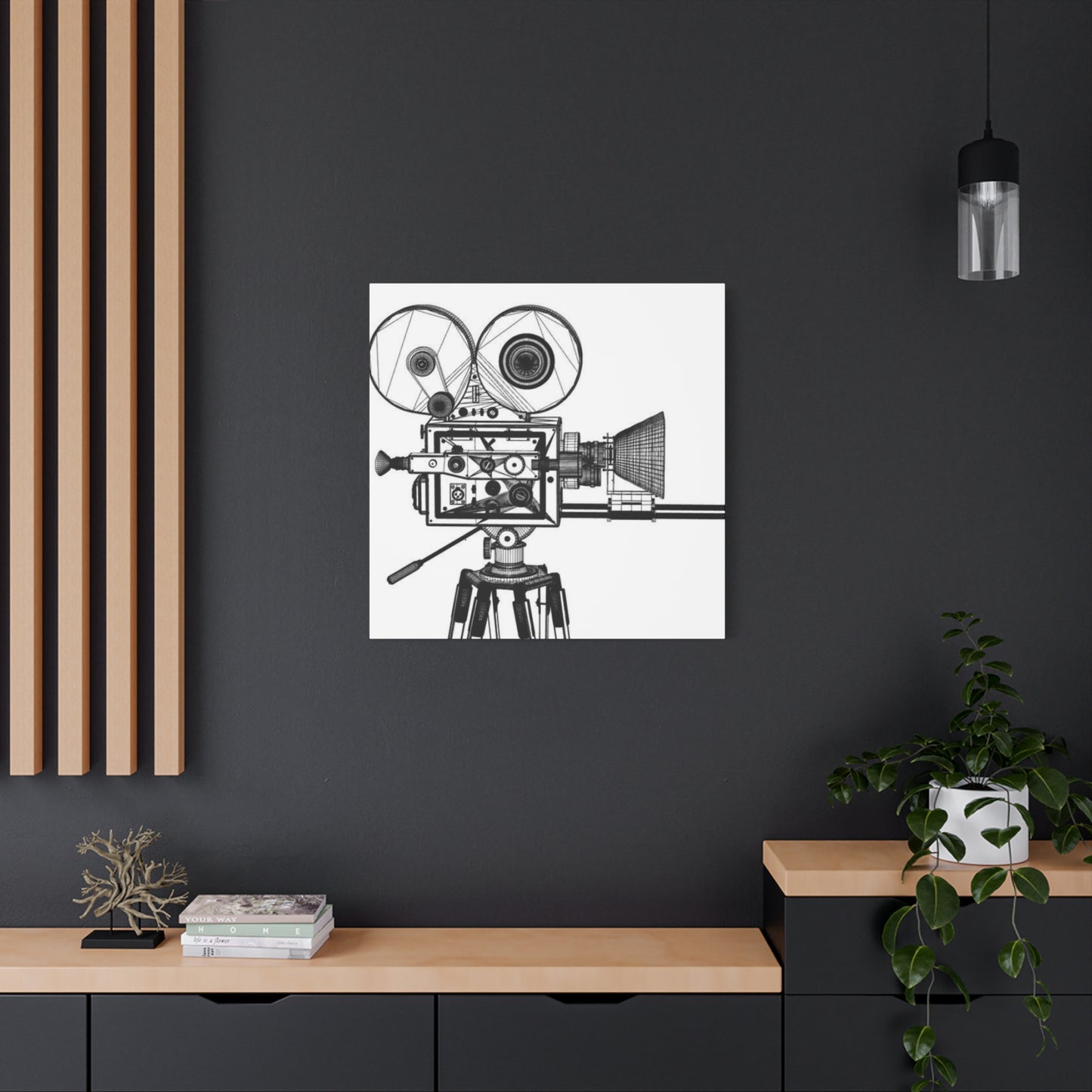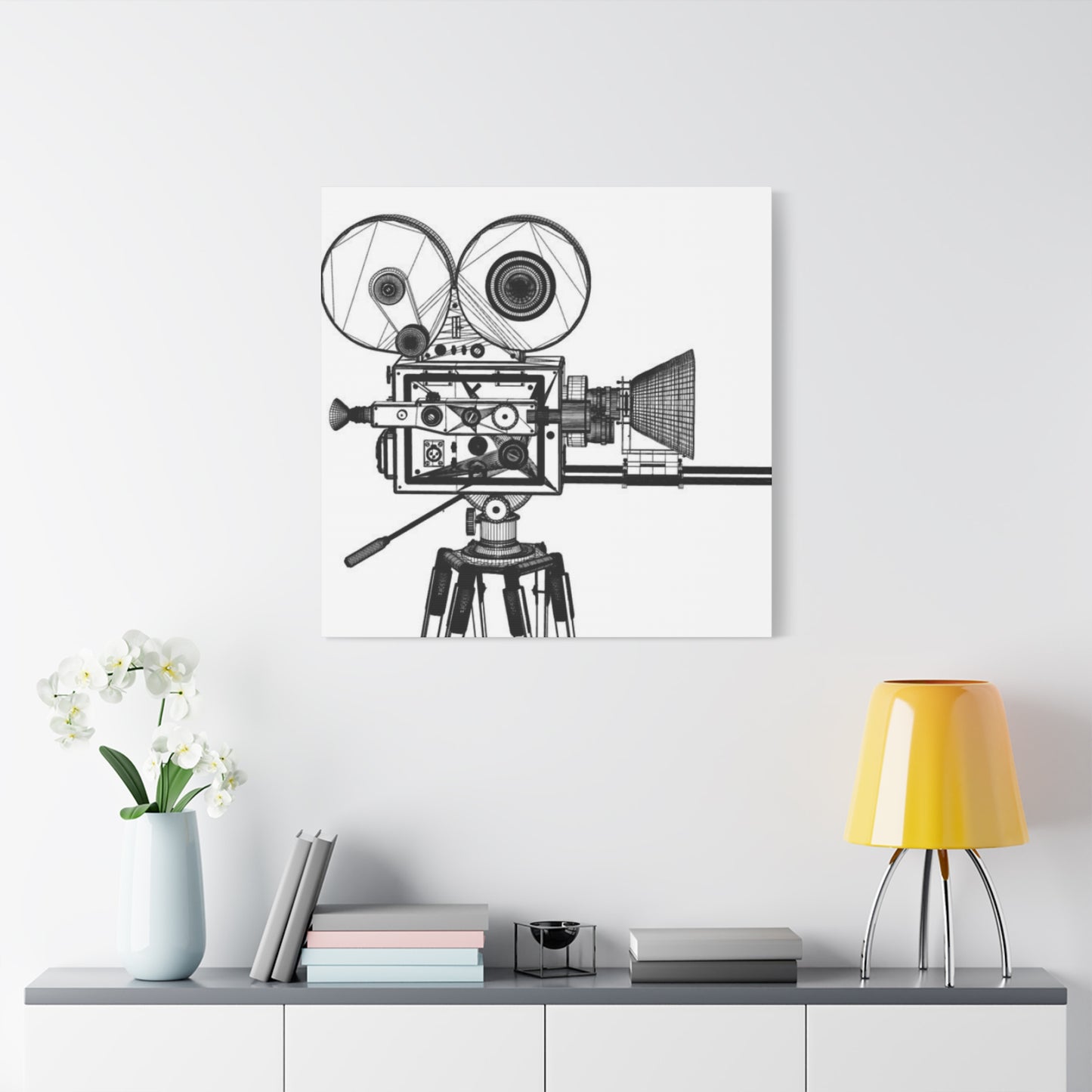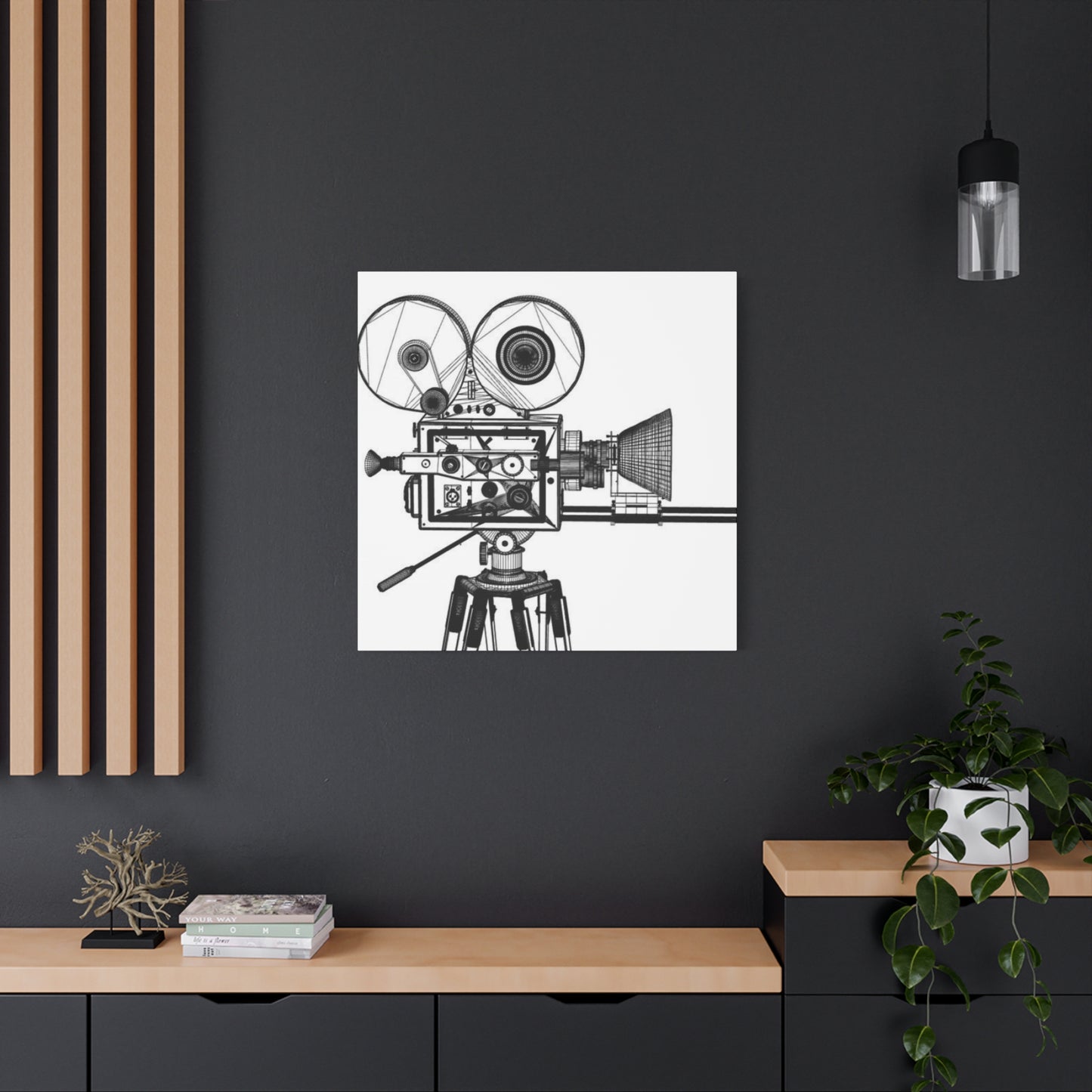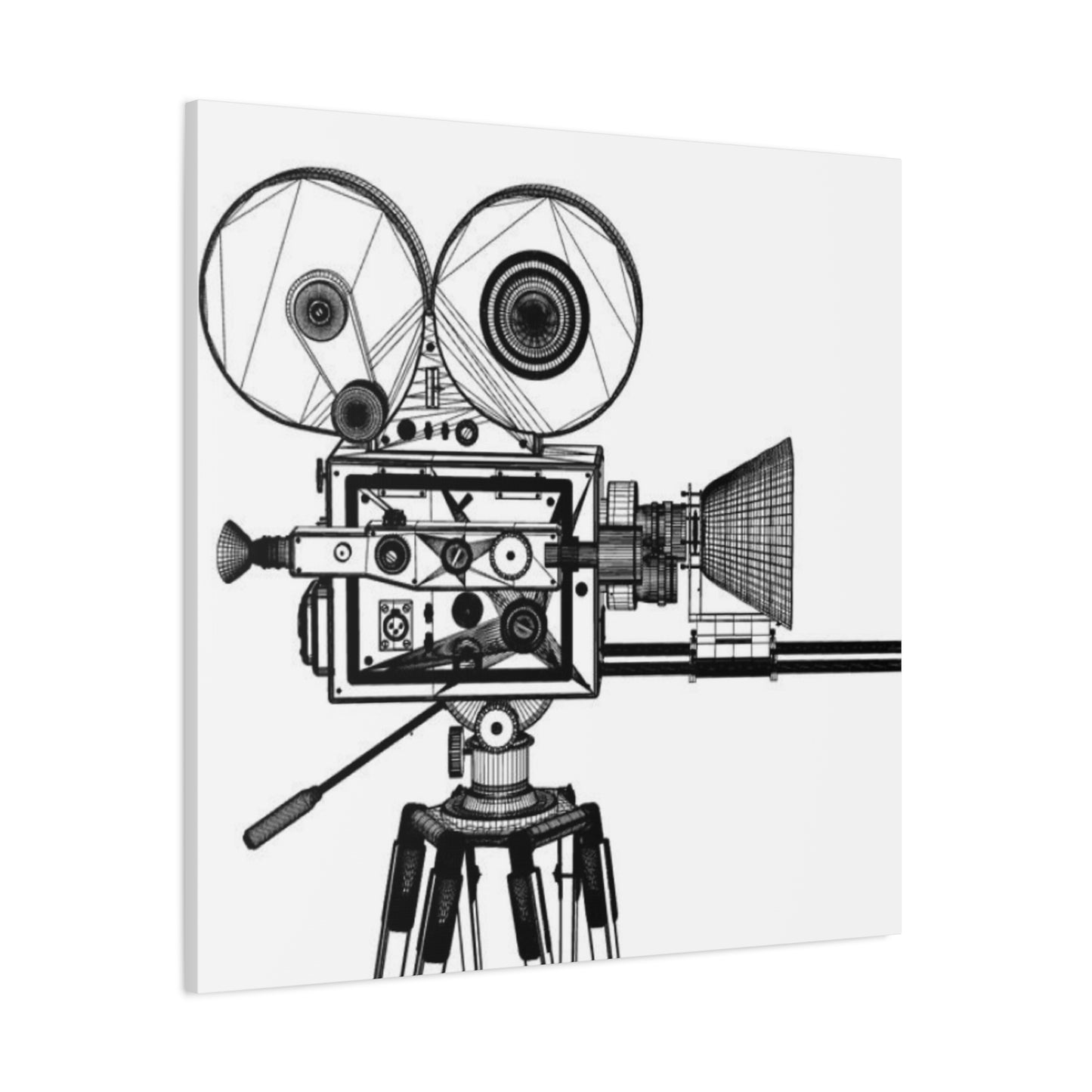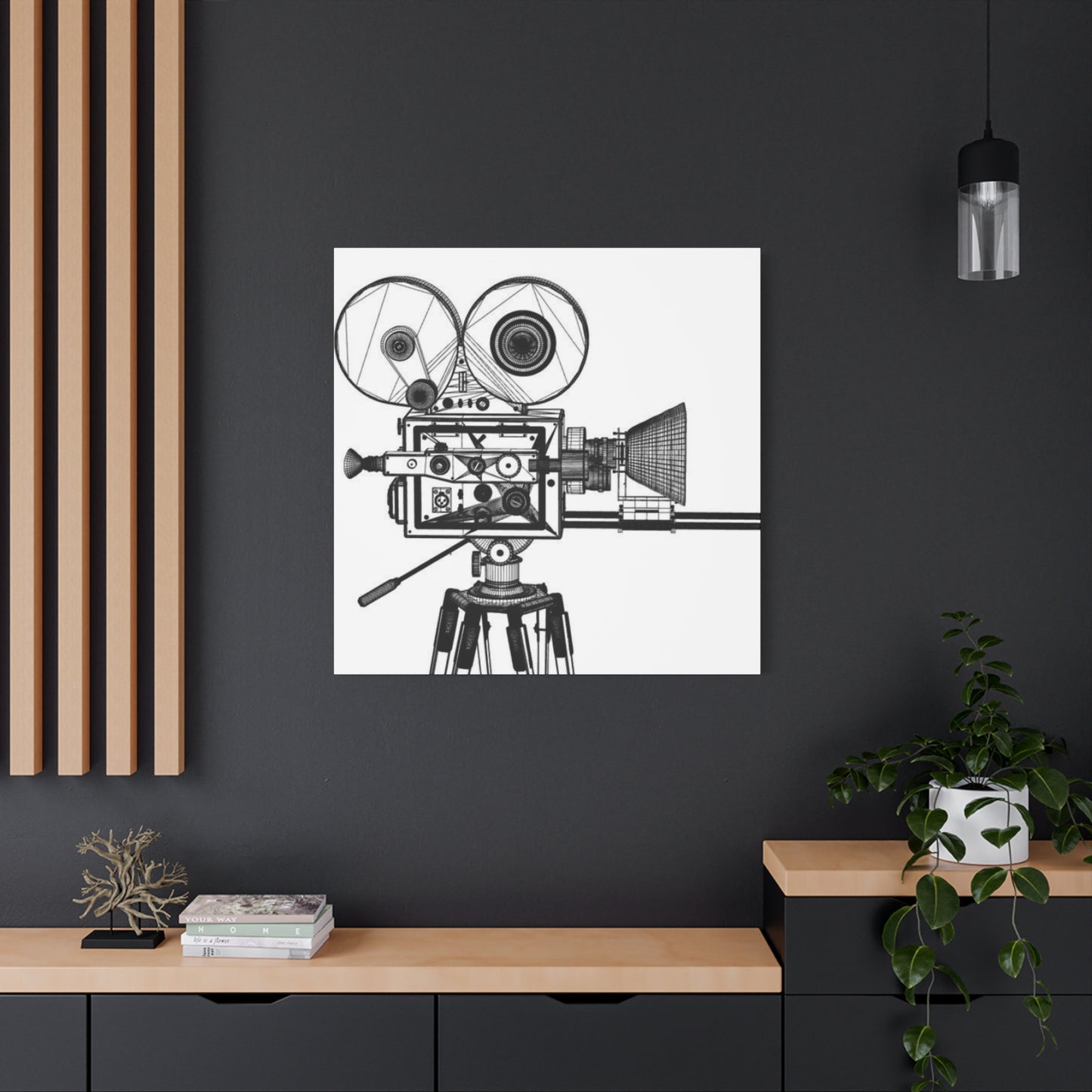Creative Cinema Camera Wall Art Ideas: Photography-Inspired Decor Solutions
Photography enthusiasts and art lovers alike have discovered the timeless appeal of incorporating camera-themed artwork into their living environments. From vintage camera prints that evoke nostalgia to sleek minimalist designs that capture the essence of modern photography, camera wall art offers endless possibilities for personalizing any room. Whether you're decorating a professional photography studio, creating an inspiring home office, or simply adding character to your living areas, camera-themed artwork provides a perfect blend of artistic expression and functional beauty.
The world of photography-inspired artwork has evolved significantly over the years, offering collectors and decorators an impressive array of options to choose from. Today's market features everything from meticulously detailed vintage camera illustrations to abstract interpretations of photographic equipment, ensuring that every aesthetic preference can be accommodated. This comprehensive exploration will guide you through the various aspects of selecting, creating, and displaying camera-themed artwork that perfectly complements your personal style and enhances your living environment.
Vintage Camera Prints That Capture Timeless Elegance
Vintage camera prints represent one of the most popular categories of photography-inspired artwork, offering viewers a glimpse into the rich history of photographic equipment. These artistic representations typically feature classic cameras from different eras, including iconic models like the Leica rangefinders, Hasselblad medium format cameras, and early Kodak box cameras. The appeal of vintage camera artwork lies in its ability to combine historical significance with aesthetic beauty, creating pieces that serve as both decorative elements and conversation starters.
The artistic interpretation of vintage cameras often emphasizes the intricate mechanical details that made these devices engineering marvels of their time. Artists frequently highlight elements such as leather textures, chrome accents, glass lenses, and precise mechanical components through various artistic techniques. These details not only showcase the craftsmanship of early camera manufacturers but also create visually compelling artwork that appeals to both photography enthusiasts and general art collectors.
When selecting vintage camera prints, consider the specific era or style that resonates most strongly with your aesthetic preferences. Some collectors gravitate toward the elegant simplicity of early 20th-century box cameras, while others prefer the sophisticated complexity of professional cameras from the mid-century period. The color palette of vintage camera artwork typically features warm, muted tones that complement traditional and contemporary decorating schemes equally well.
The versatility of vintage camera prints makes them suitable for various room settings and decorating styles. In a home library or study, these pieces create an atmosphere of intellectual curiosity and appreciation for technological innovation. Professional photographers often choose vintage camera artwork for their studios as a way to honor the craft's heritage while inspiring clients and colleagues. The nostalgic quality of these prints also makes them excellent choices for creating focal points in living rooms or dining areas where conversation and contemplation are encouraged.
Many vintage camera prints are available as high-quality reproductions that capture the subtle details and color variations of original artwork. These reproductions often utilize advanced printing techniques that preserve the artistic integrity of the original pieces while making them accessible to a broader audience. Collectors should look for prints that use archival-quality materials to ensure longevity and resistance to fading over time.
DIY Camera Wall Decor Projects for Personal Expression
Creating your own camera-themed artwork offers unlimited opportunities for personal expression while often providing cost-effective alternatives to purchasing finished pieces. DIY camera wall decor projects can range from simple photographic displays to complex mixed-media installations that incorporate actual camera equipment as artistic elements. These projects allow creators to customize every aspect of their artwork, from color schemes and composition to size and materials used.
One popular DIY approach involves creating shadow boxes that feature vintage cameras as three-dimensional art pieces. These installations typically combine actual camera equipment with complementary elements such as vintage photographs, technical drawings, or period-appropriate accessories. The depth and texture provided by three-dimensional displays create visual interest that flat prints cannot match, making them excellent focal points for any room.
Photography enthusiasts often create personalized gallery walls by combining their own camera photographs with complementary design elements. This approach might include framing favorite camera shots alongside vintage camera advertisements, technical diagrams, or historical photography-related documents. The personal connection to the displayed photographs adds emotional significance to the artwork while showcasing the creator's photographic skills and interests.
Another creative DIY option involves repurposing old or broken cameras as decorative elements. Non-functional vintage cameras can be mounted on shadow box frames, incorporated into larger mixed-media pieces, or simply displayed on shelves as sculptural elements. This approach not only creates unique artwork but also gives new life to equipment that might otherwise be discarded, appealing to environmentally conscious decorators.
Digital artwork creation has opened new possibilities for DIY camera-themed projects. Photography enthusiasts can create custom prints featuring their own camera equipment, either through traditional photography or digital illustration techniques. These personalized pieces often hold special meaning for their creators and can be easily reproduced in various sizes to accommodate different display needs.
The tools and materials needed for DIY camera artwork projects vary depending on the complexity and style of the chosen project. Basic projects might require only standard framing materials and printed photographs, while more elaborate installations may need specialized adhesives, mounting hardware, or woodworking tools. Many craft stores offer workshops and tutorials specifically focused on creating photography-themed artwork, providing guidance for beginners while inspiring experienced creators with new techniques and ideas.
Minimalist Camera Art for Contemporary Settings
Minimalist camera art has gained significant popularity among contemporary art enthusiasts who appreciate clean lines, simplified forms, and subtle color palettes. This artistic approach distills the essence of camera equipment into its most fundamental visual elements, creating pieces that make strong statements without overwhelming their surroundings. Minimalist camera artwork typically emphasizes geometric shapes, negative areas, and carefully balanced compositions that complement modern decorating philosophies.
The aesthetic appeal of minimalist camera art lies in its ability to suggest complexity through simplicity. Artists working in this style often reduce detailed camera mechanisms to essential geometric forms while maintaining recognizable camera silhouettes. This approach creates artwork that appeals to both photography enthusiasts and viewers who appreciate abstract artistic expression, making minimalist pieces versatile additions to various room settings.
Color choices in minimalist camera art typically favor monochromatic or limited palettes that enhance the clean, uncluttered appearance characteristic of this style. Black and white compositions are particularly popular, as they emphasize form and composition while eliminating potential color conflicts with existing room decor. Some minimalist pieces incorporate single accent colors that add visual interest without compromising the overall simplicity of the design.
The scalability of minimalist designs makes them particularly suitable for modern living situations where artwork may need to work in various room sizes and configurations. Large-scale minimalist camera prints can serve as dramatic focal points in spacious rooms, while smaller pieces work effectively as part of grouped displays or in more intimate settings. The clean lines and simplified forms of minimalist artwork also reproduce well at different sizes without losing visual impact or clarity.
Contemporary homes and offices often benefit from the calming influence of minimalist artwork, which can provide visual relief from the complexity and stimulation of modern life. Minimalist camera art offers the additional benefit of celebrating technological innovation and creative expression while maintaining the peaceful atmosphere that many people seek in their personal and professional environments.
When selecting minimalist camera art, consider how the pieces will integrate with existing furniture and architectural elements. The clean lines and geometric forms characteristic of this style work particularly well with modern and contemporary furnishing styles, but can also provide interesting contrast when incorporated into more traditional settings. The key is to ensure that the minimalist approach enhances rather than conflicts with the overall design aesthetic of the room.
Camera Art Specifically Designed for Studio Environments
Professional photography studios require artwork that serves multiple functions beyond simple decoration. Camera-themed art in studio settings needs to inspire creativity, demonstrate professionalism, and create comfortable environments for clients while reflecting the studio owner's artistic vision and technical expertise. The selection and placement of camera artwork in studios requires careful consideration of both aesthetic and practical factors that influence the overall studio atmosphere.
Educational value represents an important consideration when selecting camera art for professional studios. Artwork that showcases the evolution of camera technology or highlights specific technical aspects of photography can serve as conversation starters with clients while demonstrating the photographer's knowledge and passion for the craft. Historical camera prints or technical diagrams can educate viewers about photography's rich heritage while reinforcing the studio's commitment to excellence and tradition.
The lighting conditions in photography studios present unique challenges for artwork display. Studio lighting equipment can create varying illumination conditions throughout the day, requiring artwork that maintains visual appeal under different lighting scenarios. Camera-themed artwork with high contrast or bold graphic elements often works better in studio environments than subtle pieces that might be lost under bright studio lights or appear harsh under specific lighting conditions.
Client comfort and impression management are crucial factors in studio artwork selection. Camera-themed art should enhance rather than intimidate the studio experience, creating an environment where clients feel comfortable and confident in the photographer's abilities. Artwork that celebrates the joy and creativity of photography often works better than highly technical pieces that might make clients feel inadequate or overwhelmed by the complexity of the photographic process.
The durability and maintenance requirements of artwork in studio environments deserve special consideration. Photography studios often experience higher than average humidity levels, temperature fluctuations, and exposure to various chemicals used in photographic processes. Selecting artwork materials and framing options that can withstand these conditions ensures that the investment in studio artwork provides long-term value and maintains its appearance over time.
Professional photographers often find that rotating artwork displays keeps their studio environment fresh and inspiring while allowing them to showcase different aspects of their artistic interests and technical knowledge. This approach can also accommodate seasonal changes or special projects that might benefit from specific types of camera-themed artwork. Rotating displays also provide opportunities to feature work by other local artists or photographers, creating collaborative relationships that can benefit the entire local photography community.
Professional Techniques for Framing Camera Prints
The framing of camera-themed artwork significantly impacts both its visual appeal and longevity, making frame selection and preparation crucial elements in creating successful displays. Professional framing techniques protect artwork from environmental damage while enhancing its aesthetic impact and ensuring that it integrates seamlessly with the surrounding decor. Understanding the principles of professional framing helps collectors and decorators make informed decisions that maximize both the artistic and financial value of their camera artwork investments.
Matting choices play a fundamental role in how camera artwork is perceived and preserved. Professional framers typically recommend acid-free matting materials that prevent chemical reactions that could damage artwork over time. The color and width of matting can dramatically alter the visual impact of camera prints, with neutral tones generally providing versatile options that complement most artwork styles. However, creative matting choices can also enhance specific artistic elements or create interesting visual relationships between the artwork and its surroundings.
The selection of appropriate glass or acrylic glazing materials protects camera artwork from dust, moisture, and ultraviolet light while maintaining visual clarity. Conservation-grade glazing materials filter harmful UV rays that can cause fading or discoloration over time, particularly important for vintage camera prints or photographs that might be especially susceptible to light damage. Anti-reflective coatings can improve viewing experiences in brightly lit rooms or areas with large windows, though these specialized glazing options typically require higher initial investments.
Frame material choices should complement both the artwork and the room's decorating style while providing adequate structural support for the specific piece being framed. Traditional wood frames often work well with vintage camera prints, while metal frames might better complement minimalist or contemporary camera art. The weight and size of the artwork influence frame construction requirements, with larger pieces requiring more substantial frame construction and hanging hardware to ensure safe and secure mounting.
Professional mounting techniques prevent artwork from shifting within the frame while allowing for natural expansion and contraction due to humidity and temperature changes. Proper mounting also prevents the artwork from coming into direct contact with the glazing material, which could cause sticking or damage over time. These technical considerations might not be immediately visible but play crucial roles in preserving artwork quality and preventing costly restoration needs in the future.
Custom framing services often provide valuable expertise in matching frames to specific camera artwork while ensuring that all technical requirements are properly addressed. Professional framers can also advise on display locations and lighting considerations that will optimize the viewing experience while protecting the artwork from potential environmental hazards. Although custom framing typically requires higher initial investments than ready-made alternatives, the long-term benefits in terms of artwork preservation and aesthetic quality often justify the additional expense.
Modern Camera Wall Art for Contemporary Aesthetics
Contemporary camera wall art reflects current artistic trends while celebrating the ongoing evolution of photographic technology and technique. Modern interpretations of camera-themed artwork often incorporate digital art techniques, abstract design elements, and innovative material combinations that create fresh perspectives on familiar photographic themes. These contemporary approaches appeal to collectors who appreciate traditional photography while embracing current artistic innovations and aesthetic sensibilities.
Digital art creation has revolutionized the possibilities available to artists working with camera-themed subjects. Modern digital techniques allow artists to create highly detailed technical illustrations, abstract interpretations of camera mechanisms, and composite images that would be impossible to achieve through traditional artistic methods. These digital creations can be printed on various materials and at multiple sizes, providing flexibility in both artistic expression and practical display applications.
Contemporary color palettes in modern camera art often reflect current design trends while maintaining visual connections to photographic themes. Bold, saturated colors might be used to create dramatic focal points, while subtle gradients can suggest the nuanced tonal relationships that photographers work with in their craft. Some modern camera art incorporates metallic elements or special printing techniques that add texture and visual interest while referencing the mechanical precision of camera equipment.
The integration of mixed media elements distinguishes much of today's camera-themed artwork from traditional prints or photographs. Contemporary artists might combine photographic elements with painted backgrounds, incorporate actual camera parts into sculptural pieces, or use unusual printing surfaces that add texture and dimensionality to their work. These innovative approaches create unique pieces that serve as conversation starters while demonstrating the ongoing vitality and creativity within photography-inspired art.
Scale manipulation represents another characteristic of modern camera art, with artists creating oversized prints of small camera details or miniaturized versions of large camera systems. These scale changes can highlight aspects of camera design that might be overlooked in traditional representations while creating dramatic visual impacts that work well in contemporary room settings. Large-scale prints of camera details can reveal the intricate engineering and aesthetic design that goes into modern camera equipment.
The accessibility of high-quality printing technology has democratized the creation and distribution of modern camera art, allowing independent artists to produce professional-quality pieces without requiring traditional publishing or gallery relationships. Online marketplaces have made it easier for collectors to discover contemporary camera art while providing artists with global audiences for their work. This increased accessibility has resulted in greater diversity in both artistic styles and pricing options for camera-themed artwork.
Thoughtful Camera Art Gift Ideas for Photography Enthusiasts
Camera-themed artwork makes excellent gifts for photography enthusiasts, students, professionals, and anyone who appreciates the artistic and technical aspects of photographic equipment. The wide variety of available styles, sizes, and price points ensures that appropriate camera art gifts can be found for virtually any recipient and budget. Understanding the preferences and interests of the intended recipient helps ensure that camera art gifts will be appreciated and displayed with pride.
Personalized camera art represents one of the most meaningful gift options, as it demonstrates thoughtfulness and understanding of the recipient's specific interests and experiences. Custom portraits of the recipient's own camera equipment, artwork featuring their favorite photography locations, or pieces that incorporate their photographs into larger artistic compositions create unique gifts that cannot be duplicated or purchased elsewhere. These personalized approaches often become treasured possessions that hold both artistic and sentimental value.
Educational camera art serves dual purposes as both decorative pieces and learning tools, making them particularly appropriate for photography students or individuals who are developing their technical knowledge. Technical diagrams, cutaway illustrations of camera mechanisms, or historical timelines of camera development can inspire learning while providing visually appealing artwork for study areas or home offices. These educational pieces often become more valuable to their recipients over time as their understanding and appreciation of photography deepens.
The presentation and packaging of camera art gifts significantly impact the recipient's initial impression and overall satisfaction with the gift. Professional framing or high-quality matting demonstrates respect for both the artwork and the recipient while ensuring that the gift is ready for immediate display. Gift certificates for custom framing services allow recipients to choose presentation options that match their personal preferences and existing decor while extending the gift-giving experience beyond the initial presentation.
Budget considerations need not limit the thoughtfulness or impact of camera art gifts. Many excellent options are available at various price points, from affordable prints that can be professionally framed to more elaborate custom pieces or original artwork. The key is matching the gift to the recipient's interests and aesthetic preferences rather than focusing solely on price or size considerations.
Group gifts or collaborative purchases can make higher-end camera art pieces accessible while demonstrating the collective appreciation of colleagues, friends, or family members. Camera clubs, photography classes, or professional associations might pool resources to purchase significant pieces for retiring members, outstanding students, or other deserving recipients. These collaborative gifts often carry additional meaning due to the community involvement in their selection and presentation.
Black and White Camera Art for Classic Appeal
Monochromatic camera artwork possesses a timeless quality that transcends decorating trends while celebrating the fundamental relationship between photography and tonal variation. Black and white camera art appeals to viewers who appreciate classical aesthetic approaches while connecting with photography's historical roots in monochromatic imaging. The absence of color in these pieces focuses attention on composition, form, and texture while creating versatile artwork that integrates easily with various decorating schemes.
The dramatic contrast possibilities inherent in black and white camera art allow artists to create striking visual impacts while highlighting specific design elements of camera equipment. High contrast treatments can emphasize the geometric forms and mechanical precision of cameras, while subtle tonal variations can suggest the sophistication and complexity of modern photographic technology. These contrasting approaches offer collectors options that can accommodate different room settings and personal preferences.
Technical excellence becomes particularly apparent in high-quality black and white camera prints, where subtle gradations and precise detail reproduction demonstrate both artistic skill and printing quality. The absence of color eliminates distractions that might otherwise mask technical deficiencies while demanding higher standards in composition and execution. Collectors of black and white camera art often develop keen appreciation for these technical qualities, leading to more discriminating purchasing decisions and higher satisfaction with their collections.
The emotional impact of black and white camera art often exceeds that of color alternatives, as the monochromatic approach can evoke nostalgia, contemplation, and artistic seriousness. These emotional qualities make black and white pieces particularly suitable for personal spaces where quiet reflection and inspiration are valued. Studies, libraries, bedrooms, and meditation areas often benefit from the calming influence of well-chosen black and white artwork.
Historical accuracy and authenticity concerns are often less problematic with black and white camera art, as the monochromatic approach mirrors the appearance of early photography while avoiding potential anachronisms that color treatments might introduce. This historical compatibility makes black and white pieces particularly appealing to collectors who value historical accuracy and authentic representation of photographic heritage.
The printing and preservation of black and white camera art requires specific technical knowledge to ensure optimal results and longevity. Professional black and white printing often utilizes different techniques and materials than color printing, with specialized papers and inks designed to maximize tonal range and archival stability. Collectors investing in high-quality black and white pieces should verify that appropriate materials and techniques have been used to ensure their investments will maintain their appearance and value over time.
Creating Compelling Camera Art Gallery Walls
Gallery wall displays offer opportunities to showcase multiple camera-themed pieces while creating cohesive artistic statements that can transform entire rooms. The process of planning and installing successful gallery walls requires careful consideration of artwork selection, arrangement principles, and installation techniques that ensure both aesthetic appeal and structural integrity. Camera art gallery walls can accommodate various artistic styles and personal collections while providing flexibility for future additions or rearrangements.
The initial planning phase of gallery wall creation involves assessing available wall dimensions, lighting conditions, and surrounding decor elements that will influence the final display. Camera art collections often include pieces of various sizes, styles, and formats, requiring careful planning to create balanced arrangements that showcase each piece effectively while maintaining overall visual coherence. Template systems using paper cutouts or digital planning tools can help visualize different arrangement options before committing to specific layouts.
Thematic coherence in camera art gallery walls can be achieved through various approaches, including historical periods, artistic styles, color schemes, or technical subjects. Some collectors prefer chronological arrangements that trace the evolution of camera technology, while others group pieces by artistic treatment or visual characteristics. The chosen organizational principle should enhance rather than restrict the viewing experience while allowing for logical future additions to the collection.
The technical aspects of gallery wall installation require careful attention to wall anchoring, weight distribution, and alignment precision that ensures professional-appearing results. Camera art pieces often have different weight and size characteristics that demand various hanging hardware and installation techniques. Professional installation services can provide expertise in managing these technical challenges while ensuring that valuable artwork is securely and safely displayed.
Lighting design plays a crucial role in gallery wall success, as proper illumination enhances artwork visibility while protecting pieces from potential damage. Track lighting systems offer flexibility for highlighting specific pieces or adjusting illumination as collections change, while ambient lighting provides general viewing comfort. The interaction between natural and artificial lighting throughout the day should be considered to ensure that the gallery wall maintains its visual appeal under various conditions.
Maintenance and care considerations for gallery walls include regular cleaning schedules, periodic inspection for potential problems, and provisions for seasonal adjustments that might be necessary due to humidity or temperature changes. Proper maintenance preserves both the artwork and the investment represented by the collection while ensuring that the gallery wall continues to provide enjoyment and inspiration over time.
Affordable Camera Decor Options for Budget-Conscious Collectors
Budget constraints need not prevent the enjoyment and benefits of camera-themed artwork, as numerous affordable options provide excellent aesthetic value while accommodating various financial situations. The key to successful budget-conscious collecting lies in understanding where to find quality pieces, how to evaluate value propositions, and which presentation options provide the greatest impact for limited investments. Affordable camera art can serve as starting points for larger collections or as complete decorating solutions for cost-conscious enthusiasts.
Online marketplaces and print-on-demand services have revolutionized access to affordable camera art by eliminating traditional distribution barriers and reducing production costs. Independent artists often offer their work through these platforms at prices significantly lower than traditional gallery or retail outlets while maintaining quality standards that satisfy most collectors. The global reach of online marketplaces also provides access to international artists and styles that might not be available through local sources.
DIY printing options allow collectors to acquire digital files of camera artwork and produce their own prints using home equipment or local printing services. This approach often provides substantial cost savings while offering control over paper selection, sizing, and finishing options. However, DIY printing requires knowledge of color management, resolution requirements, and printing techniques to achieve satisfactory results that approach professional quality standards.
Second-hand markets, including estate sales, thrift stores, and online auction sites, occasionally yield valuable camera art discoveries at significantly reduced prices. Success in these markets requires patience, knowledge of what to look for, and willingness to invest time in searching and evaluation. The unpredictable nature of second-hand availability means that collectors using this approach must be flexible in their expectations while remaining alert for exceptional opportunities.
Budget framing options can significantly reduce the total cost of camera art display while still providing attractive and protective presentation. Standard-sized prints can utilize ready-made frames available at discount retailers, while creative alternatives such as clip frames, poster mounting systems, or DIY framing projects can provide acceptable results at minimal cost. The key is balancing cost savings with adequate protection and visual appeal.
Group purchasing arrangements among friends, family members, or photography clubs can make higher-quality pieces accessible by sharing costs among multiple participants. This approach works particularly well for prints or digital files that can be reproduced for multiple collectors, though agreements regarding usage rights and reproduction limits should be established beforehand to prevent future conflicts.
Unique Camera Wall Pieces That Stand Out
Distinctive camera artwork sets collections apart from common decorating approaches while demonstrating sophisticated aesthetic appreciation and individual personality. Unique pieces often incorporate unusual materials, innovative artistic techniques, or creative interpretations that transform familiar photographic themes into fresh artistic statements. The search for unique camera art requires openness to experimental approaches while maintaining standards for quality and long-term appeal.
Mixed media approaches combine traditional artistic materials with photographic elements, camera equipment, or digital printing techniques to create one-of-a-kind pieces that cannot be duplicated through conventional methods. Artists working in mixed media might incorporate actual camera lenses, film strips, vintage camera advertising materials, or technical diagrams into their compositions, creating layered artworks that reward detailed examination while making strong initial visual impacts.
Three-dimensional camera art, including sculptures, shadow boxes, and installation pieces, provides alternatives to traditional flat artwork while creating dramatic focal points that command attention. These dimensional pieces might feature vintage cameras as sculptural elements, abstract interpretations of camera forms, or interactive elements that engage viewers in unique ways. The added depth and texture of dimensional pieces create viewing experiences that change with perspective and lighting conditions.
Limited edition pieces offer collectors opportunities to acquire unique works while supporting artists who specialize in camera-themed subjects. Limited editions often feature special printing techniques, unique paper selections, or artist signatures that distinguish them from unlimited reproductions. The exclusivity of limited editions can enhance both their aesthetic appeal and potential investment value while ensuring that collectors own distinctive pieces.
Custom commissioned artwork provides the ultimate in uniqueness, as pieces are created specifically for individual collectors according to their preferences and specifications. Commissioned camera art might feature specific camera models, incorporate personal photographs, or reflect particular artistic styles that appeal to the collector. Although commissioned pieces typically require higher investments and longer acquisition timelines, they offer unmatched personalization and exclusivity.
Local artist collaborations can result in unique camera art while supporting regional creative communities. Many areas have talented artists who might be interested in exploring photographic themes through their preferred artistic mediums. These collaborations often produce distinctive pieces that reflect both the artist's individual style and the collector's specific interests while fostering ongoing relationships that can lead to future projects.
Photography-Inspired Art Beyond Traditional Camera Images
The broader world of photography-inspired artwork extends far beyond literal representations of cameras to encompass abstract concepts, technical processes, and artistic interpretations that celebrate various aspects of photographic creativity. This expanded view of photography-inspired art opens numerous possibilities for collectors who appreciate the conceptual and technical foundations of photography while seeking artwork that challenges conventional categories and expectations.
Abstract interpretations of photographic concepts might explore themes such as light, time, perspective, or composition through non-representational artistic approaches. These pieces can evoke the essence of photography without depicting specific equipment or techniques, appealing to viewers who appreciate conceptual depth and artistic sophistication. Abstract photography-inspired art often works particularly well in contemporary settings where conceptual artwork is valued and appreciated.
Process-oriented artwork focuses on the technical and creative procedures involved in photography rather than the equipment used to capture images. These pieces might visualize concepts such as depth of field, exposure relationships, color theory, or digital processing techniques through artistic interpretations that make abstract ideas accessible and visually compelling. Process-oriented art appeals particularly to photography students and professionals who appreciate the theoretical foundations of their craft.
Historical documentation through art preserves and celebrates important moments, figures, and developments in photography's evolution. These pieces might feature portraits of pioneering photographers, representations of significant historical events in photography, or artistic interpretations of breakthrough technologies that shaped the medium. Historical photography art serves educational functions while providing conversation pieces that connect viewers with photography's rich heritage.
Environmental themes in photography-inspired art address the relationship between photography and the natural world, urban environments, or social contexts in which the medium operates. These pieces might explore themes such as conservation photography, street photography traditions, or the documentation of social change through photographic practice. Environmental approaches often appeal to socially conscious collectors who appreciate art that engages with contemporary issues and challenges.
Technical innovation artwork celebrates the ongoing development of photographic technology while speculating about future possibilities. These pieces might visualize emerging technologies such as computational photography, artificial intelligence applications, or new imaging techniques through artistic interpretation. Innovation-focused art appeals to technology enthusiasts and forward-thinking collectors who appreciate the intersection between art and scientific advancement.
Mixing Camera Art Styles for Dynamic Displays
Successful combinations of different camera art styles create dynamic displays that maintain visual interest while avoiding monotonous uniformity. The process of mixing styles requires understanding how different artistic approaches complement or contrast with each other while maintaining overall coherence that unifies the collection. Effective style mixing can accommodate diverse aesthetic preferences while creating sophisticated displays that evolve with changing interests and acquisitions.
Color coordination strategies help unify diverse camera art styles by establishing visual connections that transcend differences in artistic approach or subject matter. A consistent color palette might tie together vintage camera prints, modern abstract interpretations, and technical diagrams through shared hues or tonal relationships. Alternatively, contrasting color schemes can create dynamic tension that energizes displays while highlighting the unique characteristics of different artistic styles.
Scale relationships between different pieces influence how style mixing is perceived and appreciated. Large-scale modern pieces might serve as anchor points for displays that include smaller vintage prints or detailed technical illustrations. The interplay between different scales can create visual rhythms that guide viewers through the collection while ensuring that each piece receives appropriate attention despite differences in size and visual impact.
Chronological mixing traces the evolution of both camera technology and artistic interpretation across different time periods, creating displays that tell visual stories about photography's development. These arrangements might combine historical camera illustrations with contemporary artistic interpretations, demonstrating how artistic approaches have evolved while maintaining connections to photography's heritage. Chronological displays often work particularly well in educational settings or professional environments.
Medium diversity within camera art collections might include photographs, prints, paintings, sculptures, or digital artwork that explore photographic themes through different artistic approaches. The combination of various media creates textural and dimensional variety that enhances viewing experiences while demonstrating the broad appeal and interpretive possibilities of camera-themed subjects. Mixed media displays require careful planning to ensure that different materials and presentation requirements are accommodated appropriately.
Thematic bridging identifies conceptual connections that link different artistic styles while maintaining focus on camera-related subjects. These connections might include shared technical interests, historical periods, artistic movements, or cultural contexts that provide logical foundations for mixing different approaches. Strong thematic connections help viewers understand and appreciate style combinations while providing coherent narrative frameworks for diverse collections.
Creative Camera Photo Display Techniques
Innovative approaches to displaying camera photographs move beyond traditional framing methods to create engaging presentations that celebrate both the photographs themselves and the cameras used to create them. These creative display techniques often incorporate interactive elements, unusual materials, or dimensional arrangements that transform photograph viewing into more immersive experiences. Creative displays can accommodate various photography styles while providing flexible systems that can evolve with changing collections.
Grid systems organize multiple camera photographs into structured arrangements that create visual impact through repetition and systematic presentation. These systems might feature photographs of different camera models arranged in chronological order, technical progression, or aesthetic groupings that highlight similarities and differences between various camera types. Grid displays work particularly well for systematic collections and educational presentations where comparison and analysis are important objectives.
Interactive display systems allow viewers to engage with photograph collections in ways that traditional static presentations cannot accommodate. These systems might include rotating display mechanisms, digital screens that cycle through larger collections, or organized storage systems that invite browsing and discovery. Interactive elements can transform photograph viewing from passive observation into active exploration while accommodating larger collections than static displays can practically manage.
Thematic clustering groups camera photographs according to specific subjects, time periods, or technical approaches while maintaining visual relationships that enhance understanding and appreciation. These clusters might focus on particular camera manufacturers, historical periods, technical innovations, or aesthetic movements within camera design. Thematic organization helps viewers develop deeper appreciation for specific aspects of camera development while providing coherent frameworks for understanding complex collections.
Timeline presentations use chronological arrangement to illustrate the evolution of camera technology and design through photographic documentation. These displays might trace the development of specific camera types, document the career progression of individual photographers, or illustrate broader technological trends within the photography industry. Timeline presentations serve educational functions while providing visually compelling narratives that engage viewers in historical and technical learning.
Mixed scale presentations combine photographs of different sizes to create dynamic visual relationships while accommodating various viewing distances and attention levels. Large-scale prints might serve as focal points that draw initial attention, while smaller photographs reward closer examination and detailed study. Mixed scale approaches can create visual hierarchies that guide viewer attention while ensuring that all photographs receive appropriate consideration despite differences in size and visual impact.
Camera Art Applications for Professional Offices
Professional office environments benefit from carefully selected camera artwork that enhances workplace aesthetics while reflecting organizational values and individual professional identities. The selection and placement of camera art in office settings requires consideration of various factors including client impressions, employee inspiration, maintenance requirements, and long-term flexibility needs. Successful office art installations create positive work environments while demonstrating professionalism and aesthetic sophistication.
Client-facing areas require camera artwork that creates positive first impressions while communicating professional competence and attention to quality. Sophisticated camera art selections can suggest precision, attention to detail, and appreciation for excellence that clients may associate with the organization's approach to business. The artwork should enhance rather than distract from business conversations while providing interesting visual elements that can serve as conversation starters when appropriate.
Employee motivation and inspiration represent important considerations in office camera art selection, as artwork can influence workplace atmosphere and individual productivity. Photography-inspired art can celebrate creativity, innovation, and attention to detail while creating visual interest that relieves the monotony of purely functional work environments. The inspirational value of camera art often increases when employees understand and appreciate the technical and artistic aspects of photography.
Durability and maintenance requirements in office environments demand artwork selections and installation methods that can withstand regular cleaning, varying lighting conditions, and occasional physical contact without deteriorating or requiring frequent maintenance. Professional-quality framing and mounting systems protect artwork investments while ensuring that displays maintain their appearance despite the demands of busy office environments.
Flexibility needs in office settings often require artwork systems that can accommodate future changes in room layouts, organizational needs, or aesthetic preferences. Modular display systems, standard frame sizes, and versatile mounting options provide adaptability that can extend the useful life of art investments while accommodating organizational evolution. Planning for flexibility from the initial installation can prevent costly reinstallation needs in the future.
Budget considerations in professional office art installations often favor approaches that provide maximum visual impact while controlling costs through strategic selection and installation decisions. Careful planning can identify opportunities to achieve sophisticated results through efficient resource allocation, professional installation, and long-term maintenance planning that protects artwork investments while ensuring continued aesthetic appeal.
Current Trends in Camera Wall Print Selections
Contemporary trends in camera wall art reflect broader movements in both photography and visual arts while responding to changing aesthetic preferences and technological capabilities. Understanding current trends helps collectors make informed decisions while ensuring that their selections remain relevant and appealing over time. Trend awareness also provides insights into future developments that might influence collecting and display strategies.
Sustainability considerations increasingly influence camera art selection as environmentally conscious collectors seek artwork produced through responsible methods using sustainable materials. These considerations might include paper sourcing, printing processes, shipping methods, and packaging materials that minimize environmental impact while maintaining quality standards. Sustainable art production often appeals to organizations and individuals who want their aesthetic choices to reflect their environmental values.
Digital integration trends reflect the increasing intersection between traditional camera art and digital technology, with many contemporary pieces incorporating QR codes, augmented reality features, or interactive digital elements that extend the viewing experience beyond static observation. These technological integrations can provide additional information, related content, or interactive experiences that enhance appreciation while appealing to tech-savvy collectors.
Minimalist aesthetics continue to influence camera art trends, with many contemporary pieces emphasizing clean lines, simplified compositions, and restrained color palettes that complement modern decorating approaches. Minimalist trends often favor artwork that makes strong statements through subtle means while avoiding visual clutter that might compete with other room elements.
Personalization trends emphasize custom and personalized camera art that reflects individual interests, experiences, or aesthetic preferences rather than mass-produced alternatives. This trend includes custom photography of personal camera collections, personalized technical illustrations, and commissioned pieces that incorporate specific requirements or subjects meaningful to individual collectors.
Global accessibility trends have expanded the range of camera art styles and cultural perspectives available to collectors, with online marketplaces providing access to international artists and cultural approaches that might not be available through traditional local sources. This expanded accessibility has enriched the diversity of available options while introducing collectors to new artistic traditions and interpretive approaches.
Selecting Appropriate Materials for Camera Wall Art
Material selection significantly impacts both the appearance and longevity of camera wall art while influencing maintenance requirements and display options. Understanding the characteristics and benefits of different materials helps collectors make informed decisions that match their aesthetic preferences, budget constraints, and long-term objectives. Material choices also affect framing requirements, installation methods, and care procedures that influence the total cost and complexity of artwork ownership.
Paper selection for camera art prints involves considerations of texture, weight, color reproduction capabilities, and archival stability that influence both immediate appearance and long-term preservation. Fine art papers often provide superior color reproduction and texture characteristics that enhance artistic quality while offering better archival stability than standard printing papers. However, premium papers typically require higher initial investments and specialized handling procedures.
Conclusion
Creative cinema camera wall art offers a unique and captivating way to celebrate the art of filmmaking and photography within your living or workspace. These pieces not only serve as striking decorative elements but also pay homage to the tools and passion behind visual storytelling. Incorporating cinema camera-themed art allows enthusiasts, professionals, and admirers of the craft to express their love for the medium while adding an artistic flair to their décor.
Cinema camera wall art comes in a variety of styles—from vintage-inspired prints and minimalist line drawings to bold, abstract designs. This versatility ensures that no matter your aesthetic preferences, you can find a piece that complements your space, whether it’s a modern studio, cozy living room, or creative office. The imagery of cameras evokes creativity, nostalgia, and innovation, making these artworks perfect for inspiring productivity and artistic expression.
Beyond their visual appeal, cinema camera artworks symbolize the magic behind the scenes—the moments captured, stories told, and emotions conveyed through film and photography. Displaying such art can ignite inspiration, reminding you and your guests of the power of imagery and the impact of visual narratives in our culture.
From a design standpoint, cinema camera wall art pairs well with industrial, modern, eclectic, or even vintage décor styles. Materials like metal, wood, and canvas bring different textures that enhance the artistic feel of your space. Arranging multiple pieces in a gallery wall or spotlighting a single statement artwork can personalize your environment and create a focal point that sparks conversation.
In conclusion, creative cinema camera wall art is more than just décor—it’s a tribute to the art and craft of storytelling through lenses. By integrating these thoughtful and inspiring pieces into your home or office, you create a space that reflects passion, creativity, and a deep appreciation for visual arts. Embrace the blend of form and function with cinema camera art to elevate your décor and keep the spirit of filmmaking alive every day.

















